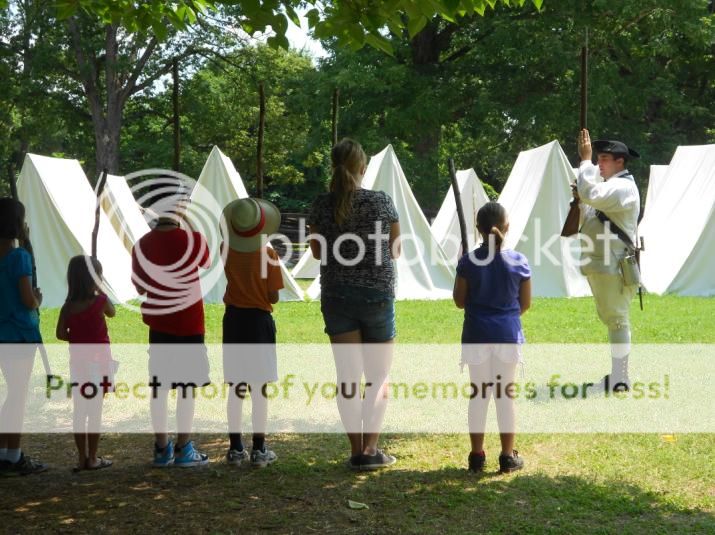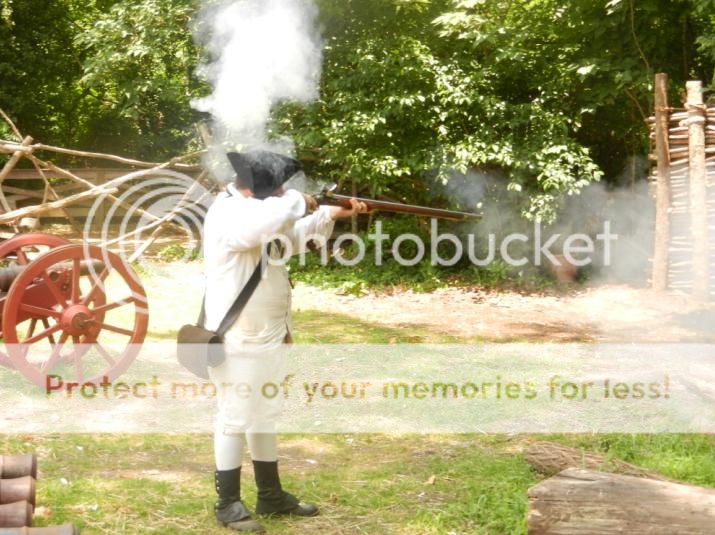1140 hours, 25 June, 2012
Capitol secured, a counterattack was mounted but has been driven off. All troops mobilizing to take business district. House to house actions anticipated.
Business as Usual
Where would we be without Business?
(and of course
sound and equitable business practices)

Well, wed either be tribal hunter-gatherers or subsistence-farmers being ground down by self-appointed nobles and suffering from the violence inherent in the system
but thats not the point.
Its business that generally promotes and strengthens civilization (true that it is wealthy, powerful businesspeople that often destroy said civilizations, but business in general
that bit we need). Theres no reason for establishing a town of any type in the first place except as a centralized location for trade. Thats why the first cities grew up along known trade routes and on the sites of established common markets. And while the business of business has changed little, the types of business being conducted has changed and evolved immensely over time. And that lead us to DoG Street
Now, there are several things going on here that need splaining.
First off, the fellow addressing the crowd from that raised platform (and Ill come back to what he was on about in a bit), would never have called this tree lined main road: DoG. No, hed have respectfully used it full and proper name: Duke of Gloucester Street; which it was given in honor of Queen Annes eldest son (a sad story there). It was the modern students of William and Mary University down at the far end of the road there that shortened it to Dog Street. Six syllables is just entirely too many to have to worry over.
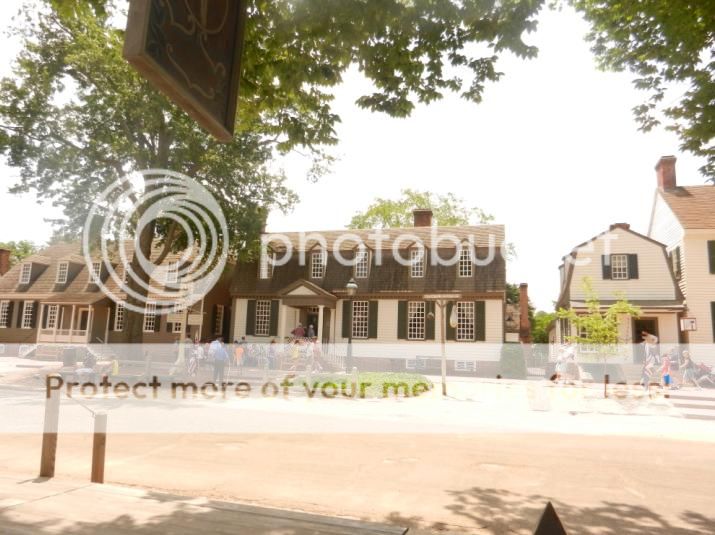
This really is the main part the Restored Area and most of the open building and interaction with the interpreters takes place along this broad thoroughfare. Of course it started out as little more than a horse path and was even obstructed at several places by buildings and a public oven. To convert it from path to road, the town conducted what might be the first documented condemnation proceeding in American history. In 1704 nd with the blessing of the House of Burgesses, the structures in question were purchased from one Col. John Page. The total amount of the transaction
five pounds sterling. Oh, and he got to keep all the bricks from the buildings after they were razed (and thats monetarily more than you might think but Ill come back to that latter on).
Now back to the fellow doing the talking up there.
Throughout the day, the folks who inhabit the town reenact small scenes that tell a bit of the story of life during the revolution. There are a couple of different story lines depending on which day you happen to visit. While we were there, the subject was the struggles of daily life in around the year 1780, after the insurrection had been going on for a while. What was happening at the moment was that a crowd had gathered and was bickering about the cost of basic goods. One of their number went so far at to accuse a local shopkeeper of hording flour to drive up the price. Things were pretty tough back then and with general staples being in short supply and costing nearly 100 times what they had prior to hostilities, you can see why folks would be going at one and other.
Actually the fellow was lucky he didnt get strung up, but fate intervened (in the form of the next scripted interaction listed on the schedule). Just as this public argument was ending folks started gathering again back in front of the Capitol building where a small but heavily armed group of British Regulars were marching on to the common area. The senior officer then bid the crowd to pay head as the honorable British General; Benedict Arnold had a few word of wisdom that he wished to impart upon us
Hero of Saratoga indeed!
The turncoat had several points that he felt the towns folk needed to be aware of. First off he stated that theyd all been misled by the radicals sitting comfortable up in Philadelphia and that continuing to stand against the mightiest army the world has ever known was pointless and futile (I wonder if there isnt a modern warning in there somewhere). The next detail he imparted on us was that the kings forces now controlled Virginias current capitol of Richmond and would be garrisoning troops throughout the Tidewater region. Needless to say
this meant that they now controlled Williamsburg and all its inhabitants. A pronouncement that also came with an appropriate change in the banner fluttering over the retired statehouse

The last bit of information was a demonstration of just how magnanimous and forgiving their Royal Sovereign was. All citizens in the town would be given the opportunity of signing a Loyalty Oath to the king. They even planned to bring it around to every house and business to save you the trouble of having to come to them. Signing it (while the kings men were standing there in your parlor - guns at the ready and with all members of your family gathered round for their safety of course) would immediately pardon you of all the treasonous acts that you had obviously committed up to now. At this point everyone in town now had a major decision to make. Sign and continue to conduct business as usual (while risking the danger of having documented proof that you are a Tory Collaborator should the Continental Army be victorious), or refuse to sign and be arrested on the spot for treason (which would very likely garner you a short drop and a sudden stop). The only other option was to grab what you could carry and leave.
Post haste.
A fairly tough spot to be in wouldnt you say?
= = = = = = = = = = = = = = = = = = = = = = = = = = = = = = = = =
Heading Uptown
With the Redcoats move to subjugate the towns folk now completed, it was time for us to get back to our mission of taking the town away from the both of them. Our first objective was to gain control of the pharmaceutical industry
The Pasteur & Galt Apothecary is one of the first few businesses youll encounter along DoG Street (as youre headed away from the Capitol building). An apothecarys most relevant modern equivalent would be a drug store and this establishment is certainly where you went if one was in need of some type of prescription for whatever ailed them. But you might also head here to acquire tobacco or snuff (a might on the ironic side there) or such fine imported goods as gold and silver leaf, candles, French chalk (for taking grease out of silks and fine cloths), vermicelli, salad oil, anchovies, spices, or even sugar. This was considerably more then a drug store.
Such businesses were generally owned and run by doctors or surgeons and could also provide most of the needed medical treatments required by the people of the day. As such the tools needed for preparing and mixing medicines were also supplemented by those needed for bleeding patients, performing surgery, setting broken bones, or even extracting teeth (although most of that type of business was conducted in the patents homes or in the back room
Out in the main part of the shop however, the most prominent feature was the shelves and drawers filled with exotic oils, unctions and preparations
Being as actually seeing the doctor was quite expensive, most folks would self-diagnose and treat using concoctions that were guided more by tradition, folklore, or domestic medical books rather then any serious science. Most maladies were treated via some type of purgative. The idea being that something in you was causing the problem, so you needed to get it out
one way or another. The most common preparation sold at the time was just such a purgative that went by the common name of Thunderbolt. I can only imagine the effect that such a concoction might have on ones innards.
< < < ~ > > >
Speaking of innards, we were starting to get just a might hungry by now. Time for a bit of foraging. The next major building along the way is the Raleigh Tavern. There are several spots along the street to have a sit-down meal in a colonial style (with reservations made prior to your arrival of course), but the Raleigh is more of a historical building illustrating how taverns are run and their importance to the communities that they serve (and closed at the time so we didnt get inside that day). But if you were to follow the side pathway to the buildings out back
There is much grub to be had.
This spot actually gets mixed reviews. If youre looking for folks who are actually cooking and baking along traditional methods, youll be disappointed (though there are other spots along the way that are demonstrating those skills). If however youve got the munchies and want a quick snack that pays homage to those bygone times
then this will de nicely. In practice, this is more like a Disney QS. There are plenty of tasty breads, muffins, cookies, hand-pies, and sandwiches, but youll also find bagged chips, and soft drinks here. We got a sampling of their wears and decided that all in all, it was plenty good (if a might pricey). The winners were the gingerbread and the chilled apple cider (common things you can get elsewhere, but still quite good). For the boys, the hit of this stop was the WDW style Refillable Mugs
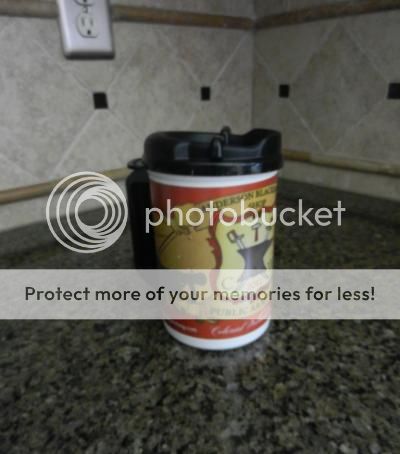
Have I mentioned yet that it was rather hot that day? Sweltering might be a better description. Mom and dad were dealing with this condition better then the youngens (which seems odd being as supposedly theyre both younger, stronger and have lived their entire lives even farther south then this and ought to be use to it by now, but you know how kids like to complain). Anyway, it turns out that there are several spots around the old city where you can top off these little beauties
gratis. The only problem is that you cant take them into any of the historic buildings.
< < < ~ > > >
Nosh consumed, carbonated beverages in hand, it was time to move on toward the west. The next open shop we encountered was the Silversmiths digs. Only so many people can enter any one shop depending on the size of the space. As such, you may have to wait a bit for the folks ahead of you to clear out (something which caused us to bypass one or two spots along the way). That was the case here, but after a bit, several other explorers finally vacated the premises. The coast now clear, the boys dropped their cups by the stoop and in we went...
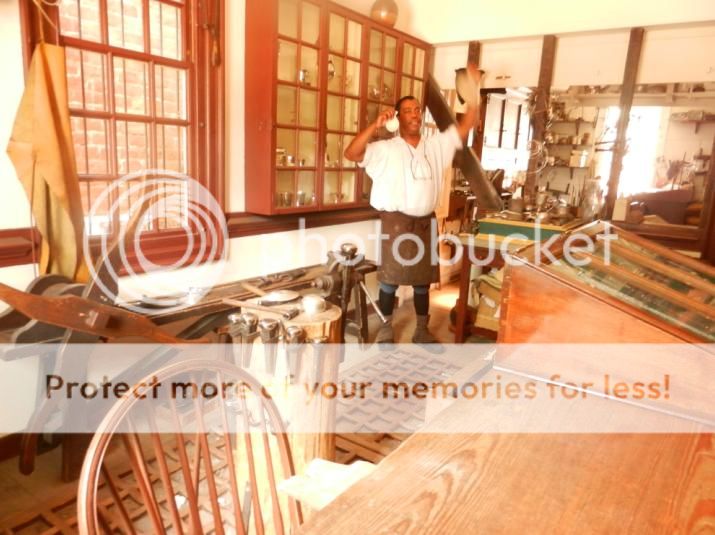
In my lifetime the value and importance of having a silver service has diminished somewhat. I remember when I was growing up there were a lot of references in books, on old TV, and even general conversation made to "Grandma's Silver" as being something that was likely to be pilfered or hidden away somewhere. You don't hear much about it any more. How different the times. Way back when, the purpose of a silver service wasn't so much as a decorative implement for consuming Christmas dinner (unless you were silly wealthy that is). Rather for the middling folks it was the everyday place where you physical stored your retirement savings. If you had extra funds (or were paid in silver coinage something Mother England keenly disapproved of) you might well have it converted into a set of spoons, a platter, a teapot or some other type of hollowware. Things that could if necessary be melted back down and used as currency later on. The silversmith had the know-how, tools and hearth required to make deposits and withdrawals of this type
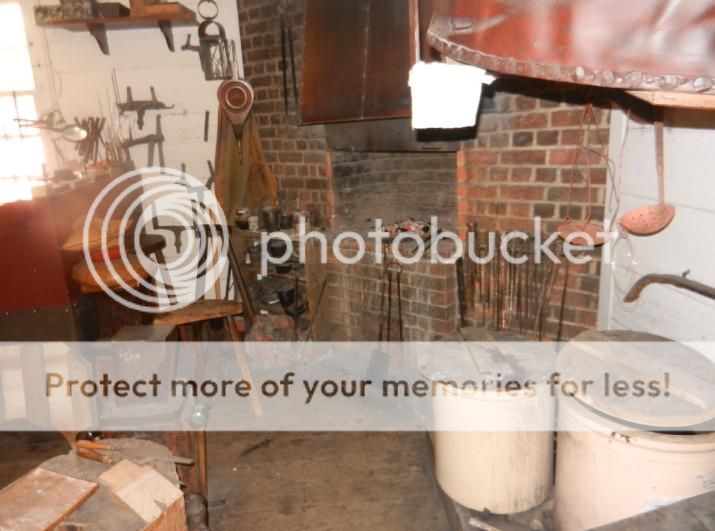
Lets say that you had incurred some unexpected debts or wanted to purchase the field adjacent to your land. You might pop in here and have the handles removed from a number of pieces and melted back into something more tradable (saving the fork tines and spoon bowls if possible because those took the most work to hammer and shape and therefore cost more in commission). On the other hand you might have acquired new assets and decide to save them for the future by converting them into some amount of Argent and then have that flashy metal worked into some new serving pieces. It wasnt uncommon to even have the handles on all your pieces shortened or lengthened depending on whether you were in need of cash or squirreling it away.
< < < ~ > > >
What do you buy?
This traditional Colonial merchant's greeting is the one that struck our ears as we entered the next business along the way
the Milliners shop. Now I knew that a milliner made and sold womens hats and as such I wasnt as interested in this stop at first as I ought to have been. But the definition that I was aware of was more modern and did not encompass what that profession actually entailed at the time of the Revolution.
It turns out that milliner, as hat maker, is a nineteenth century term. The word is much older and first described those that dealt in Milanese (as in Milan, Italy) ware. These wears included such things as silks and ribbons but also extended to armor and swords as well as anything else produced by in or imported by the Italians. The military accoutrements began to recede from general fashion after a while and the profession focused more on clothing and fashion in general.
Around the time of the Revolution, millinery shops were often a woman's business and were the only business a woman could actually purchase. A single woman acting as a milliner was accepted on par with any male businessman (except for that whole not being able to vote or hold down a public office thing of course). The primary things sold were imported garments and most importantly, imported cloth (weaving was not yet big business in the Americas).
The cost of said garments depended on the fabric. If you could afford the material, then you could easily afford to have your clothing made for you. The cost for the labor was almost inconsequential as the material easily took up 80%-90% of the cost. For instance, a silk taffeta dress might cost about £15, and that was nearly a half-years salary for a young journeyman tradesman. Its no wonder that folks owned only a few well-made and well-chosen frocks and took exceptionally good care of them.
You may also notice in that last picture that there was a display of what looks like toys. Thats not by mistake. Well-stocked millineries might offer fabric, baby and children's clothes, hats and shoes, needles, thread, ribbons and laces. But they would also offer such sundries as jewelry and hairpieces, dolls, books and games, sugar, liquor, teapots, medicines and even lottery or theatre tickets.
Remember, I'm here to tempt your eye and empty your pocketbook.
All right, time to move on.
Boys
remember to grab your cups as we head back out the door, ya here.
= = = = = = = = = = = = = = = = = = = = = = = = = = = = = = = = =
Encampment
With the business district pretty well under our control, it was time for our raiding party to shift gears and take on the next obstacle
the most potentially dangerous obstacle
the one that was familiar with and well drilled in military tactics
the folks that were actually armed
OK, not really all that much to worry about just yet.
Lets back up just a little bit. As I said a moment ago we decided to move on toward a different part of the historic area. With that aim in mind, our strike force moved off of the fabled Duke of Gloucester Street and headed north; one whole block to the north (remember the whole place isnt all that big to begin with).
At the corner of Botetourt (pronounced: BOT-ə-tot) and Nicholson (pronounced: Nich-ol-son

) streets youll find one of those spots where them there refillable mugs can be
ummmm
refilled (this pleased the boys mightily).
Cattycornered across the street from there is a rebel encampment.
Now this particular exhibit is seasonal and you wont encounter it in the dead of the winter. But being as we were about as far from winter as you could possibly be - calendar wise - we got to partake.
Depending on the time of day and the volunteers available to man the site, youll see various demonstration related to activities common to such military camps of the day. When we arrived, the Sergeant was drilling a batch of new recruits on the fine art of loading and firing a musket. Being as none of these bumpkins had thought to bring along their own firearms, nice sound (and relatively straight) sticks were pressed into the roll.
Once he had the entire rank working together like a well-oiled machine, he dismissed that corps of volunteers, and then rendered a proper demonstration of the modern flintlock rifles capabilities for the rest of the onlookers
The next demonstration was given by a couple of teenage fellas who were volunteering their musical talents to the cause.
They first explained why a fifer and drummer were considered to be a military necessity at the time, than went into how you maintained the instruments themselves. This was followed by renditions of several commands and entertainment pieces. I could go into excruciating detail on this subject (believe me I can) but Ill just give you the option of being sucked into or narrowly escaping that type of dissertation with this little link back to one of my earliest bonus features
The Origins of Corps
Hummm
To click, or not to click
that is the question.
(not such a tough decision really
just move along)
Next up: Bricks and Mortar







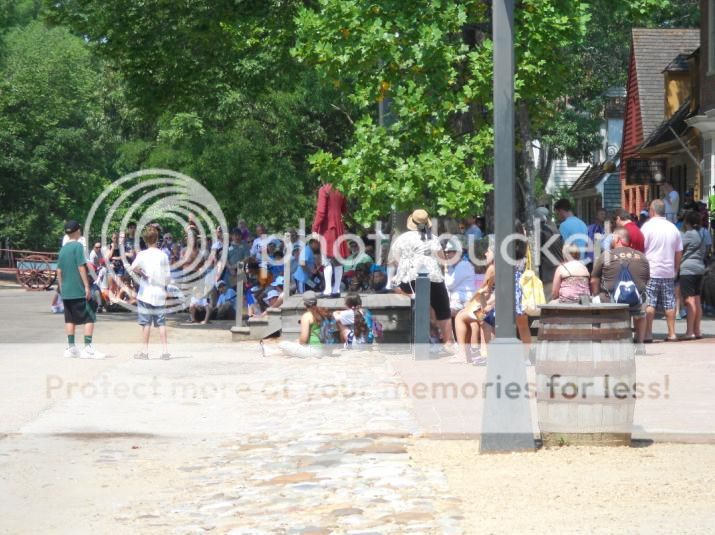

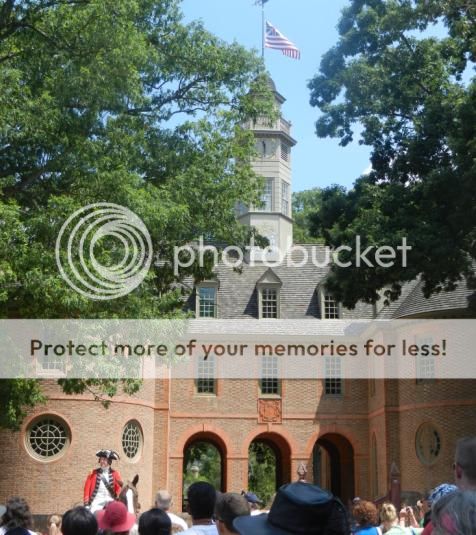

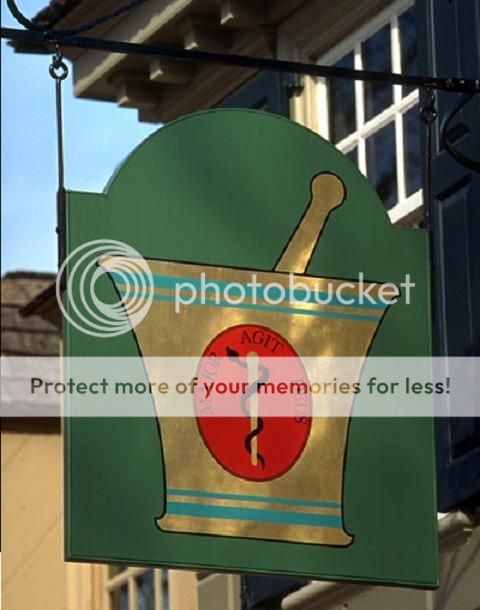
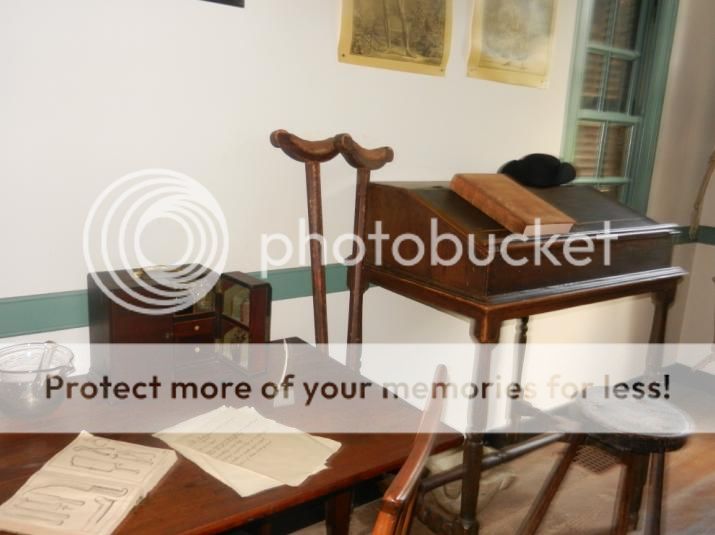
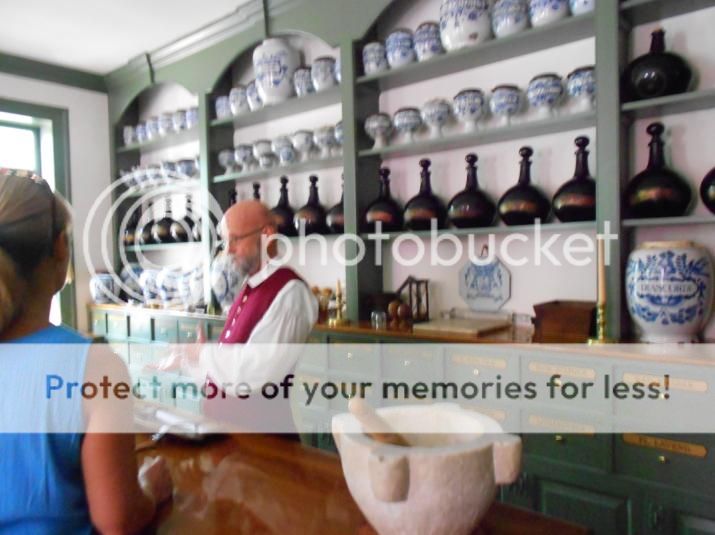






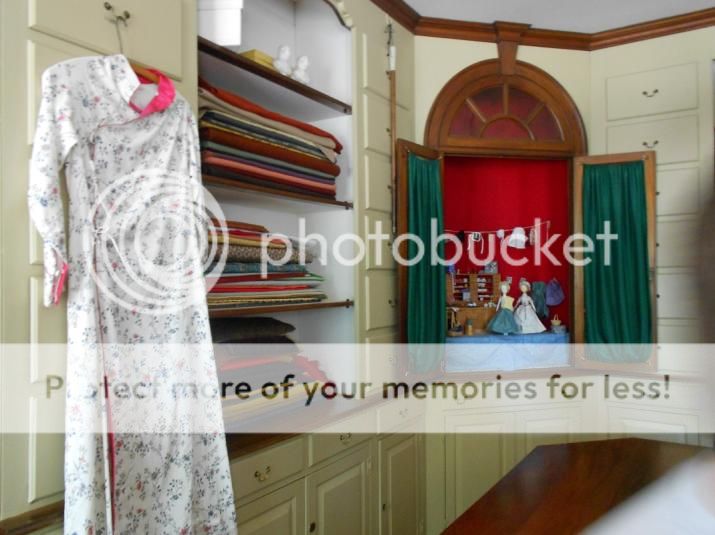
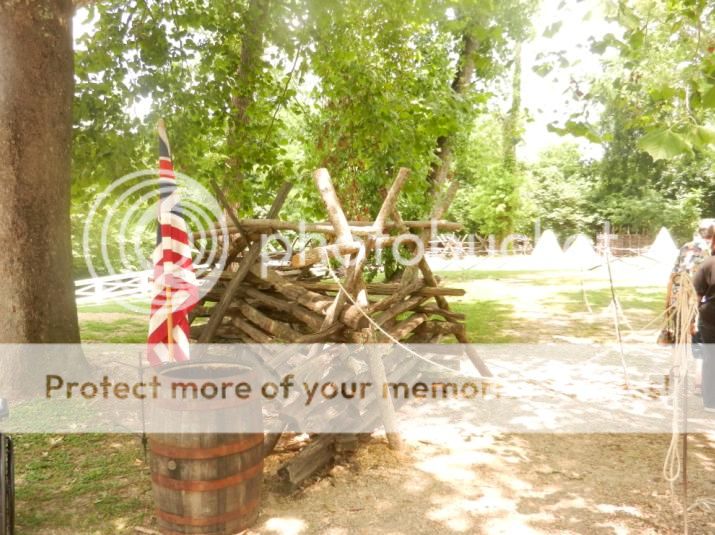

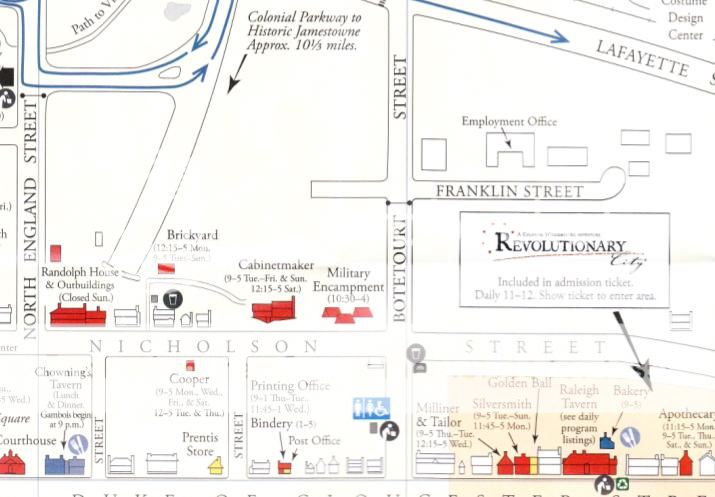
 ) streets youll find one of those spots where them there refillable mugs can be
ummmm
refilled (this pleased the boys mightily).
) streets youll find one of those spots where them there refillable mugs can be
ummmm
refilled (this pleased the boys mightily). 
